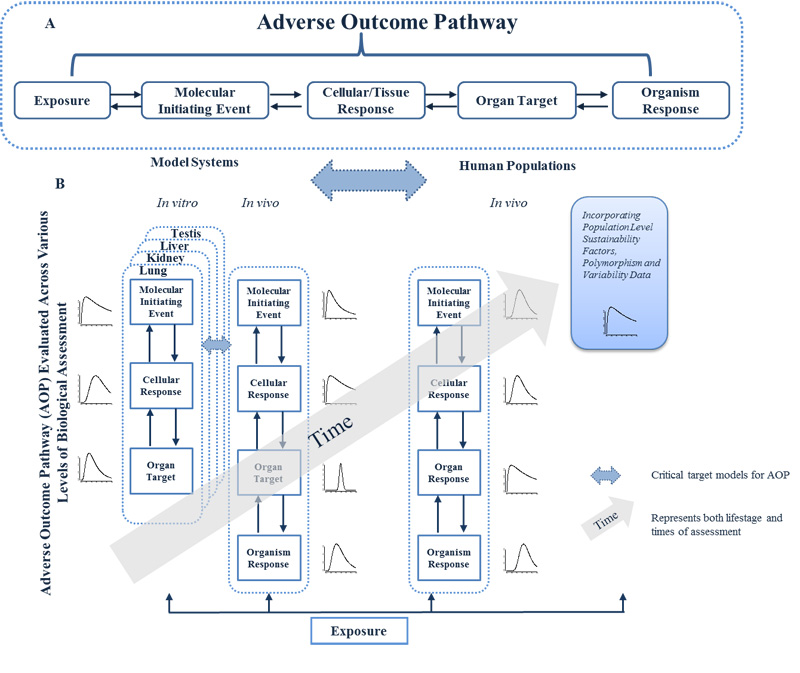Our Modeling and Translation Project in the Predictive Toxicology Center integrates results from our four Center organotypic projects and builds an adverse outcome pathway (AOP) framework to give context to the interpretation of these results. We use a systems-based Advese Outcome Pathway (AOP) approach linked with toxicokinetic and dynamic models to identify key molecular-initiating events and cellular, tissue and organ responses from each organotypic model. These AOPs are then integrated with lifestage and genetic susceptibility factors to model engineered nanomaterial (ENM) toxicity response across organ systems, organisms and populations. This Project also identifies critical data gaps and makes recommendations for further testing of metals and ENMs.
